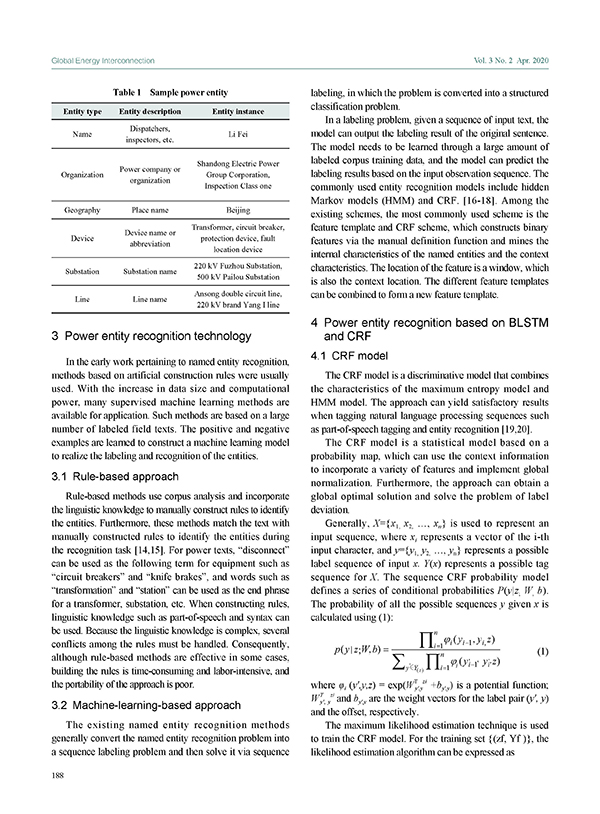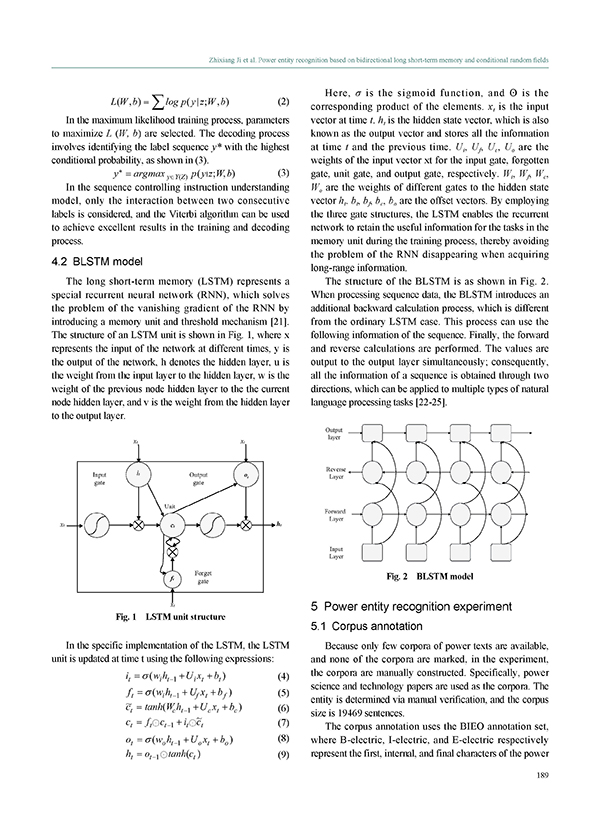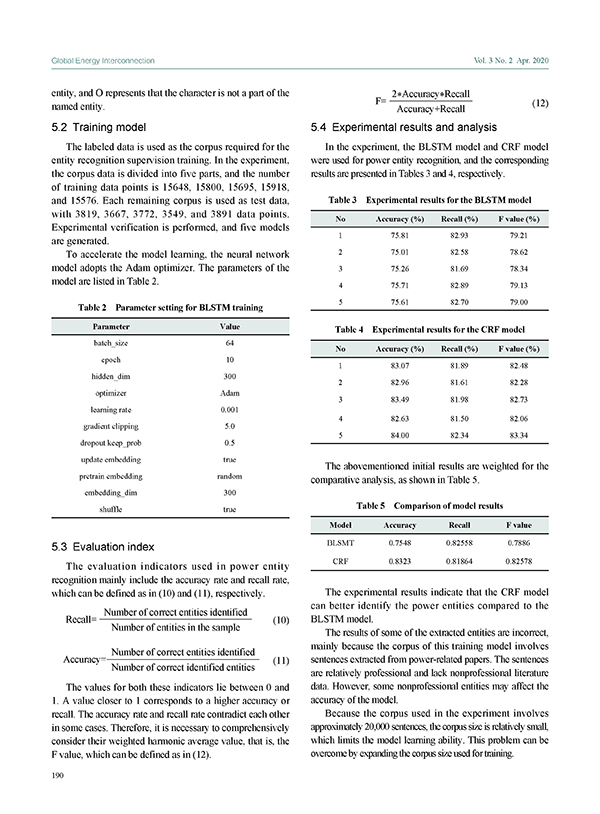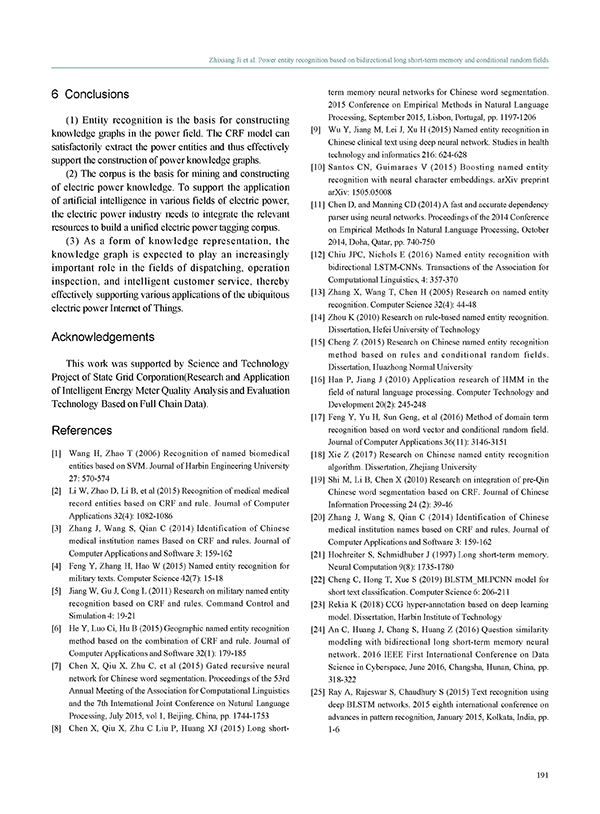       |
|---|
Power entity recognition based on bidirectional long short-term memory and conditional random fields
 Zhixiang Ji1, Xiaohui Wang1, Changyu Cai1, Hongjian Sun2
Zhixiang Ji1, Xiaohui Wang1, Changyu Cai1, Hongjian Sun2
1.China Electric Power Research Institute Co. Ltd., Beijing, 100192, P.R. China
2.University of Durham, The Palatine Centre, Stockton Road, Durham, DH1 3LE, UK
Abstract
With the application of artificial intelligence technology in the power industry, the knowledge graph is expected to play a key role in power grid dispatch processes, intelligent maintenance, and customer service response provision. Knowledge graphs are usually constructed based on entity recognition. Specifically, based on the mining of entity attributes and relationships, domain knowledge graphs can be constructed through knowledge fusion. In this work, the entities and characteristics of power entity recognition are analyzed, the mechanism of entity recognition is clarified, and entity recognition techniques are analyzed in the context of the power domain. Power entity recognition based on the conditional random fields (CRF) and bidirectional long short-term memory (BLSTM) models is investigated, and the two methods are comparatively analyzed. The results indicated that the CRF model, with an accuracy of 83%, can better identify the power entities compared to the BLSTM. The CRF approach can thus be applied to the entity extraction for knowledge graph construction in the power field.
Keywords: Knowledge graph, Entity recognition, Conditional Random Fields (CRF), Bidirectional Long Short-Term Memory (BLSTM).
目录
